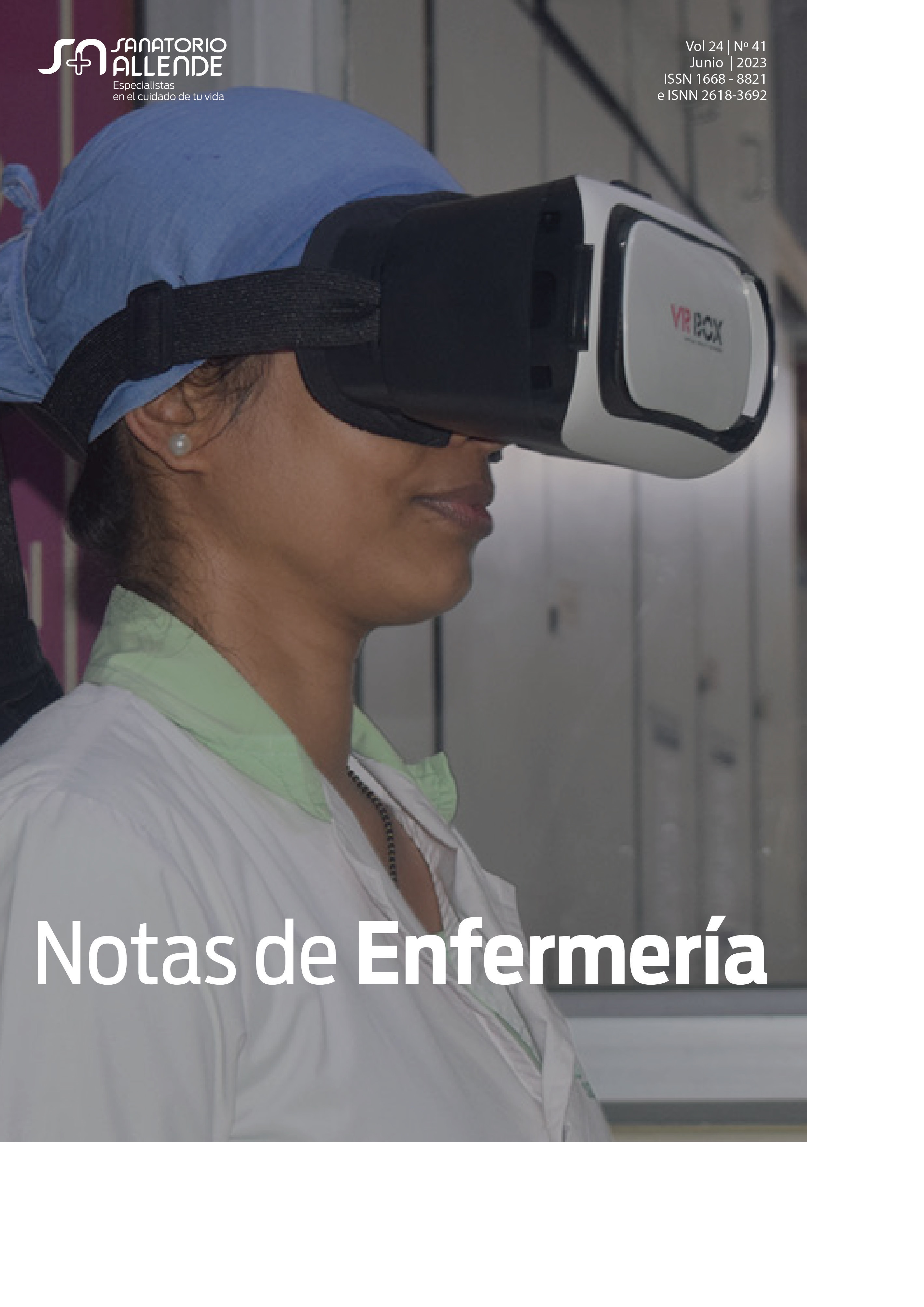NURSING PROCESS IN A PATIENT WITH SEPTIC SHOCK FROM THE PERSPECTIVE OF SELF-CARE DEFICIT
DOI:
https://doi.org/10.59843/2618-3692.v24.n41.41465Keywords:
Self Care, Shock Septic, Critical Care, Nursing ProcessAbstract
Septic shock is a state of tissue hypoperfusion defined as a subcategory of sepsis in which circulatory and cellular metabolism alterations can considerably increase mortality. Worldwide, septic shock ranks second as a cause of non-coronary death in the Intensive Care Unit (ICU), with an annual incidence of 10%, and a hospital mortality of 18 to 35%. Objective: To describe the approach to the Nursing Care Process in patients with septic shock and from the perspective of self-care deficit. Methodology: The clinical case was based on the stages of the Nursing Care Process (PAE), on the Nursing Theory of Self-Care Deficit (TEDA) by Dorothea Orem and on taxonomic tools for the individualized approach to the care plan. Results: A 68-year-old patient, in the Adult Intensive Care service, undergoes the first postoperative hour due to left nephrectomy secondary to perirenal abscess, which conditions septic shock. The PAE was approached with the support of the TEDA, with a priority being the dignostic label reduction of cardiac output. Conclusions: The application of nursing theories and models provide a frame of reference to provide quality care in different areas of performance, including intensive care units. It is essential to use the PAE methodology that allows to give evidence of the professionalization of care, by using technical language, with the support of Orem's Theory and with taxonomic tools.
Downloads
References
Singer M, Deutschman C, CW S, JAMA. Nuevas definiciones para sepsis shock séptico. Third Int Consens Defin Sepsis Septic Shock [Internet]. 2016 [Citado 15 Sep 2020]; 315(8):1–8. Disponible en: http://clinicainfectologica2hnc.webs.fcm.unc.edu.ar/files/2018/03/Nuevas-definiciones-para-sepsis-y-shock-s%C3%A9ptico.pdf
Charlton M, Sims M, Coats T, Thompson JP. The Microcirculation and its measurement in sepsis. J Intensive Care Med [Internet]. 2017 [Citado 15 Sep 2020]; 18(3):221-227. Disponible en: https://www.ncbi.nlm.nih.gov/pmc/articles/PMC5665123/
Russell J, Rush B, Boyd J. Pathophysiology of Septic Shock. Crit Care Clin [Internet]. 2018 [Citado 15 Sep 2020]; 34(1): 43-61. Disponible en: https://www.criticalcare.theclinics.com/article/S0749-0704(17)30070-2/fulltext
Martin GS, Mannino DM, Moss M. The effect of age on the development and outcome of adult sepsis. Crit Care Med. 2006; 34:15-21.
Niño Mantilla ME, Hormiga Sánchez CM, Ordóñez IT, Poleth Villarreal Ibarra V, Ardila Acuña L, Torres Dueñas D. Mortalidad por sepsis e infecciones complicadas en el departamento de Santander, Colombia Mortality from sepsis and complicated infections in the department of Santander. Colomb Rev Univ salud [Internet]. 2014 [Citado 15 Sep 2020]; 16 (2):139–49. Disponible en: http://www.scielo.org.co/pdf/reus/v16n2/v16n2a02.pdf
Rodríguez F, Barrera L, De La Rosa G, Dennis R, Dueñas C, Granados M, et al. The epidemiology of sepsis in Colombia: A prospective multicenter cohort study in ten university hospitals. Crit Care Med [Internet]. 2011 [Citado 17 Sep 2020]; 39(7):1675–82. Disponible en: https://insights.ovid.com/crossref?an=00003246-201107000-00011
Rhodes A, Evans LE, Alhazzani W, Levy MM, Antonelli M, Ferrer R, et al. Sepsis: actuación de enfermería en urgencias. A propósito de un caso. Universidad de Valladolid [Internet]. 2016 [Citado 17 Sep 2020]; 13(3):1–38. Disponible en: http://www.revistabiomedica.org/index.php/biomedica/article/view/349/1735
Arevalo Salto GJ. Manejo hemodinámico actual del shock séptico en el adulto. Machala, Ecuador: Unidad Académica de Ciencias Químicas y de la Salud [Internet]. 2017 [Citado 17 Sep 2020]; 1:1–35. Disponible en: http://repositorio.utmachala.edu.ec/bitstream/48000/11894/1/AREVALO%20SALTO%20GINGER%20JEANINE.pdf
Carrillo R. Estudio epidemiológico de la sepsis en unidades de terapia intensiva mexicanas. Cir Ciruj. [Internet]. 2009, [citado 18 de septiembre 2020] ; 77:301-308. Disponible en: https://www.medigraphic.com/pdfs/circir/cc-2009/cc094h.pdf
Naranjo Hernández Ydalsys, Concepción Pacheco José Alejandro, Rodríguez Larreynaga Miriam. La teoría Déficit de autocuidado: Dorothea Elizabeth Orem. Gac Méd Espirit [Internet]. 2017 Dic [citado 2020 Sep 28]; 19( 3 ): 89-100. Disponible en: http://scielo.sld.cu/scielo.php?script=sci_arttext&pid=S1608-89212017000300009&lng=es.
Cols EM, Reniu AC, Ramos DR, Fontrodona GP, Romero MO. Manejo de la sepsis grave y el shock séptico en un servicio de urgencias de un hospital urbano de tercer nivel. Oportunidades de mejora. Emergencias [Internet]. 2016 [Citado 17 Sep 2020]; 28(4):229–34. Disponible en: http://emergencias.portalsemes.org/descargar/manejo-de-la-sepsis-grave-y-el-shock-sptico-en-un-servicio-de-urgencias-de-un-hospital-urbano-detercer-nivel-oportunidades-de-mejora/77
Gong YC, Liu JT, Ma PL. Early fluid loading for septic patients: Any safety limit needed? Chinese J Traumatol. English Edition [Internet]. 2018 [Citado 17 Sep 2020]; 21:54–7. Disponible en: https://www.ncbi.nlm.nih.gov/pmc/articles/PMC5835489/
Heather T, Kamitsuru S. NANDA, Diagnósticos Enfermeros Definiciones y Clasificación 2021-2023. 12a ed. España: Elsevier; 2021.
Moorhead S, Swanson E, Johnson M, Maas M. Clasificación de Resultados de Enfermería (NOC): Medición de Resultados En Salud. 6a ed. España: Elsevier; 2018.
Butcher HK, Dochterman JM, Bulecheck GM, Wagner CM. Clasificación de Intervenciones de Enfermería (NIC). 7a ed. España: Elsevier; 2018.
Marriner T, Raile M. Modelos y Teorías de Enfermería, 9na ed. Elsevier Mosby; 2018.
CENETEC. Diagnóstico y Tratamiento de Sépsis Grave y Choque Séptico en el Adulto, Guía de Práctica Clínica, Evidencias y Recomendaciones. [Internet].; 2009 [Citado] 12 01 2020. Disponible en: http://www.cenetec.salud.gob.mx/descargas/gpc/CatalogoMaestro/084_GPC_Sepsisgveychoqueseptico/SepsisGrave_y_Choque_ER_CENETEC.pdf.
CENETEC. Diagnóstico y Tratamiento del Equilibrio Acido-Base, Evidencias y Recomendaciones. [Internet].; 2010 [Citado] 12 Enero 2020. Disponible en: http://www.cenetec.salud.gob.mx/descargas/gpc/CatalogoMaestro/411_IMSS_10_deseq_acid_base/EyR_IMSS_411_10.pdf
Downloads
Published
How to Cite
Issue
Section
License
Copyright (c) 2023 Sanatorio Allende

This work is licensed under a Creative Commons Attribution-NonCommercial 4.0 International License.
Those authors who have published with this journal, accept the following terms:
- Attribution — You must give appropriate credit, provide a link to the license, and indicate if changes were made. You may do so in any reasonable manner, but not in any way that suggests the licensor endorses you or your use.
- NonCommercial — You may not use the material for commercial purposes.

